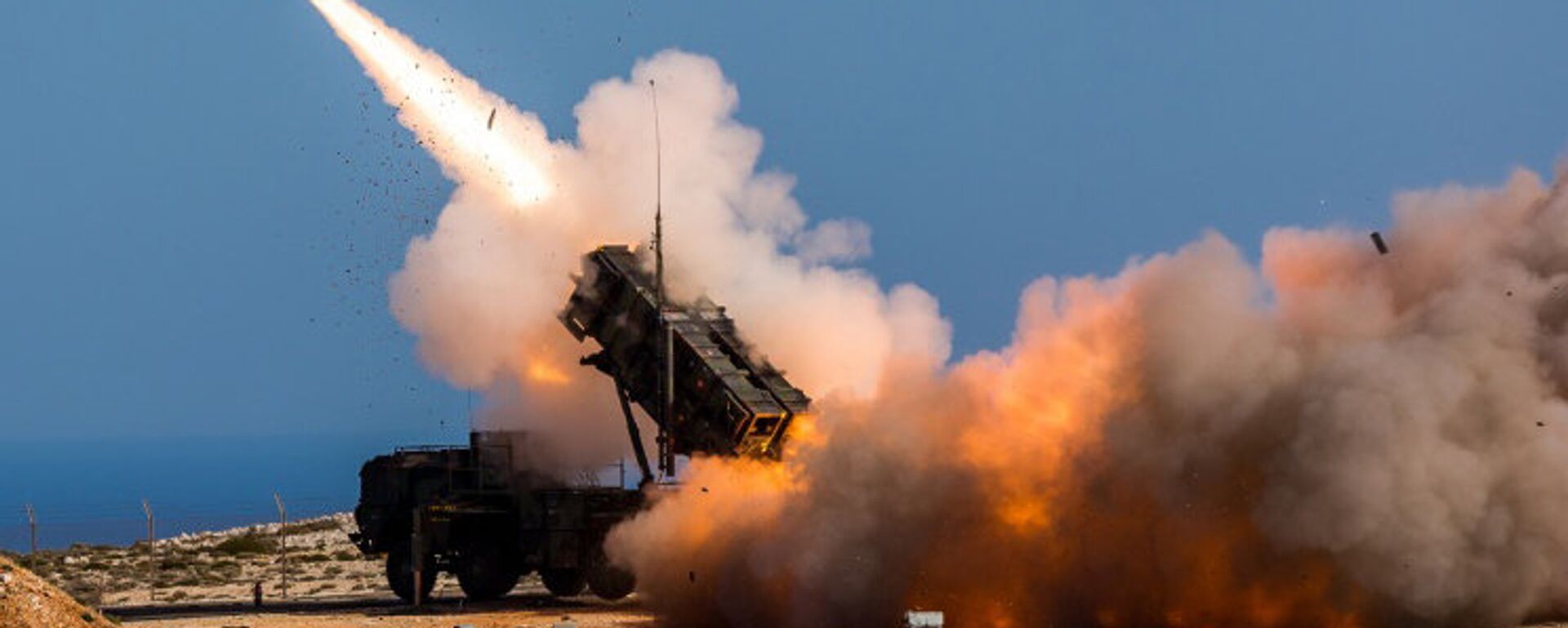What Do We Know About Kakhovka Hydroelectric Power Plant, Attacked by Kiev Forces?
11:23 GMT 06.06.2023 (Updated: 18:32 GMT 23.06.2024)
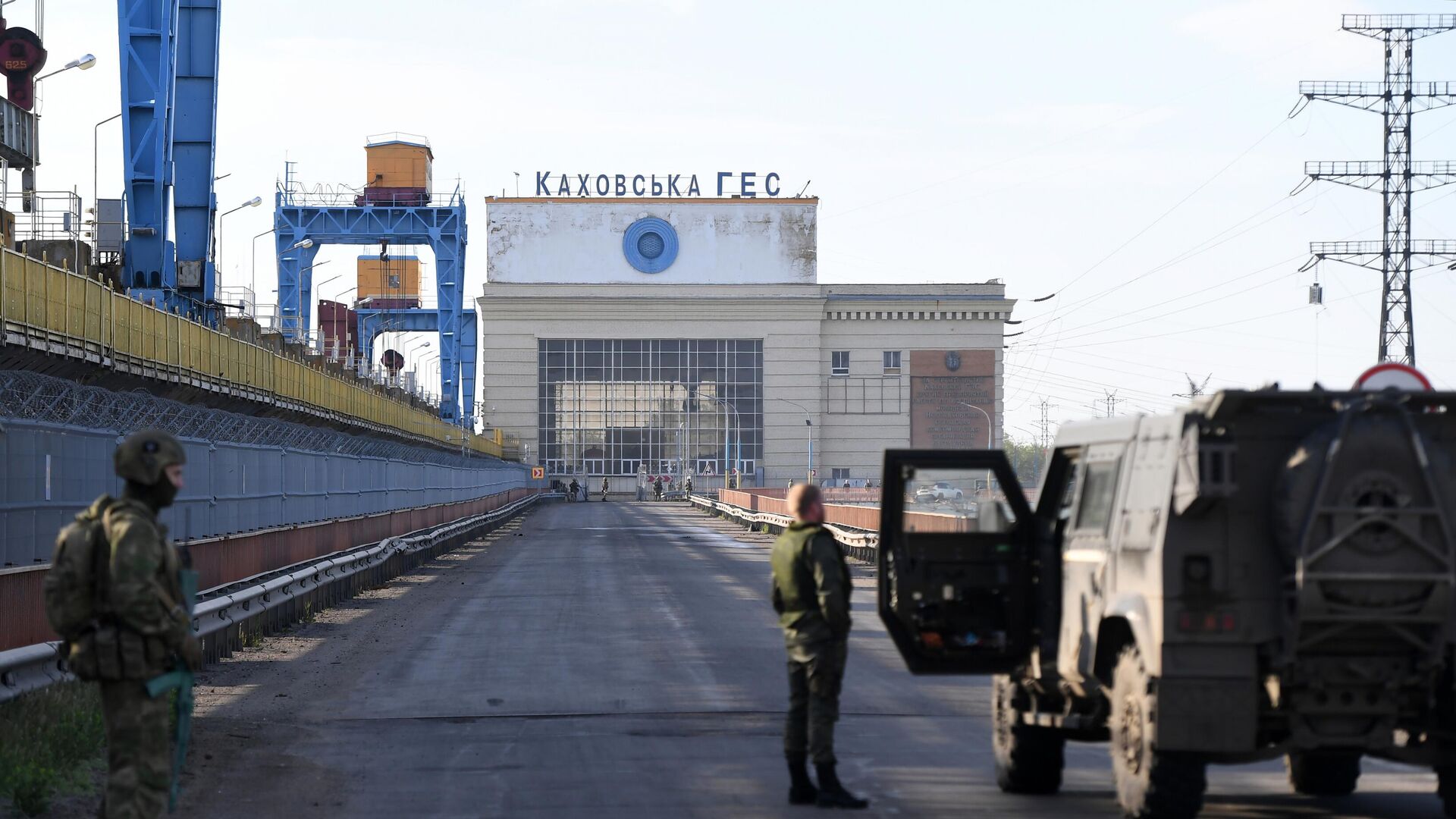
© Sputnik
/ Subscribe
The Kakhovka HPP is located in the city of Novaya Kakhovka, in the Kherson region, which came under the control of Russian forces in March 2022. Troops of the Kiev regime have been shelling the dam in Novaya Kakhovka over the past year as part of strikes deliberately targeting Russian civilian infrastructure.
The Kakhovka Hydroelectric Power Plant in Russia's Kherson region came under shelling by Ukrainian forces on June 6, with its upper part destroyed, according to Novaya Kakhovka city Mayor Vladimir Leontyev.
"There were several hits at two o'clock in the morning in the upper part of the hydroelectric power plant, where the flashboards are located, where the valves are, and it was destroyed. The dam was not destroyed, and this is very good," Leontyev said.
He added that water level after the destruction rose by 10 meters (32.8 feet). With water uncontrollably discharged through the destroyed structures, local authorities have prepared buses in case they need to rescue people from possible flooding. According to Novaya Kakhovka's mayor, at least 300 homes could be affected by the partial destruction of the HPP.
Sputnik takes a closer look at the Kakhovka HPP, its importance for the region, and the attacks it has been under by Ukraine's forces.
Facts & Figures About Kakhovka Hydroelectric Power Plant
Power station capacity - 335 MW
Annual power Generation - 1.4 TWh (terawatt-hours)
3 out of 6 power units in operation
Reservoir volume: 18.19 km³
Surface area 2,155 km²
Number of staff (as of 2022) - 251 people.
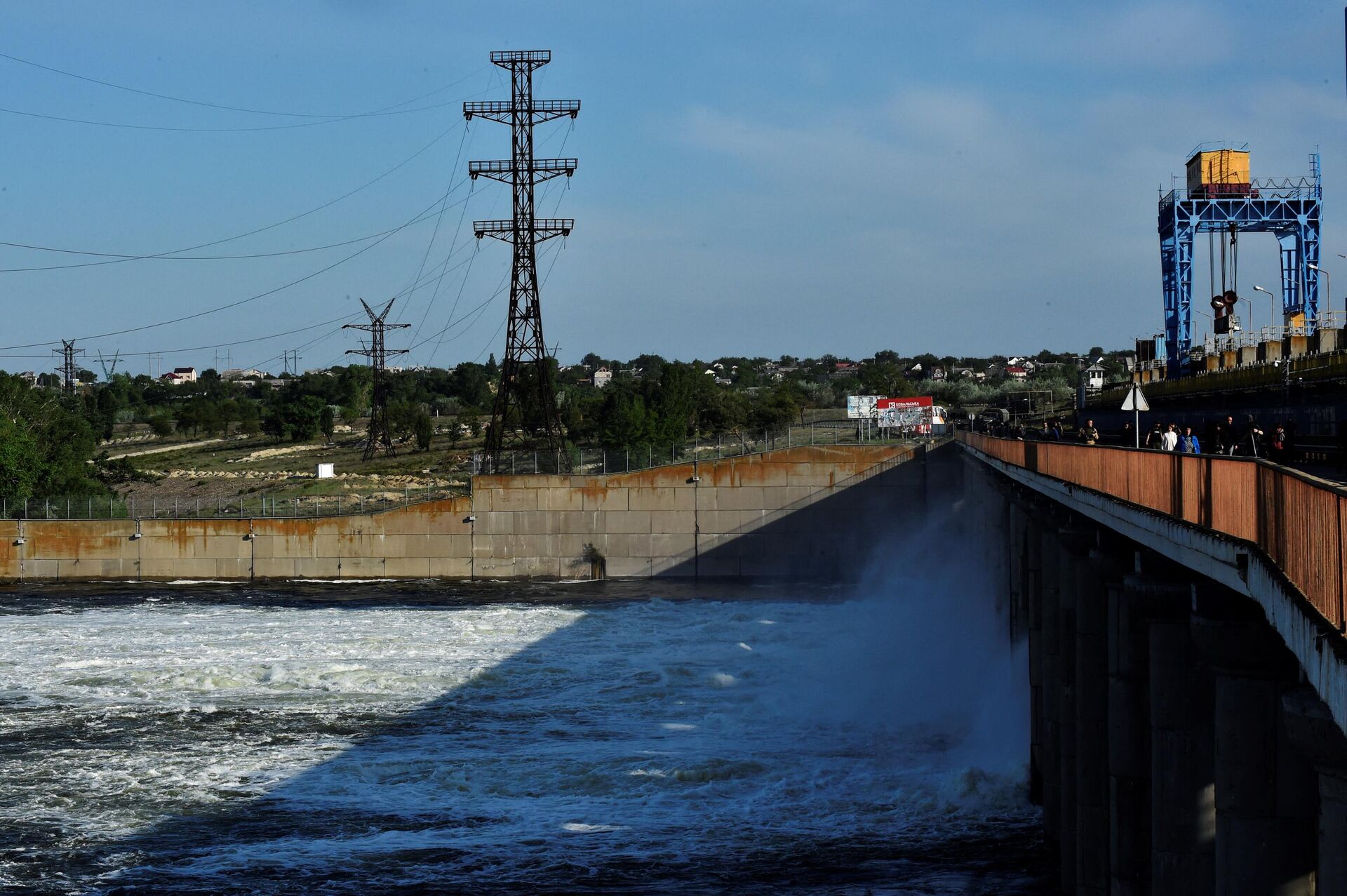
This photo taken on May 20, 2022, shows a view of the Kakhovka Hydroelectric Power Plant, Kherson Oblast.
© AFP 2023 / OLGA MALTSEVA
Where is Kakhovka Hydroelectric Power Plant Located?
The Kakhovka HPP is situated on the Dnepr River, five kilometers away from the city of Novaya Kakhovka in Russia's Kherson region. This is the sixth and lowest-situated of the cascade of HPPs on the huge waterway. Novaya Kakhovka, a port city perched on the reservoir's southern bank, came under the control of the Russian forces in March, 2022 as part of the special military operation in Ukraine. The Kherson region voted in a referendum in September to become part of Russia. Accession referendums were also held in the Zaporozhye region, as well as the People's Republics of Donetsk and Lugansk. All four regions were formally accepted under Russian jurisdiction in October 2022.
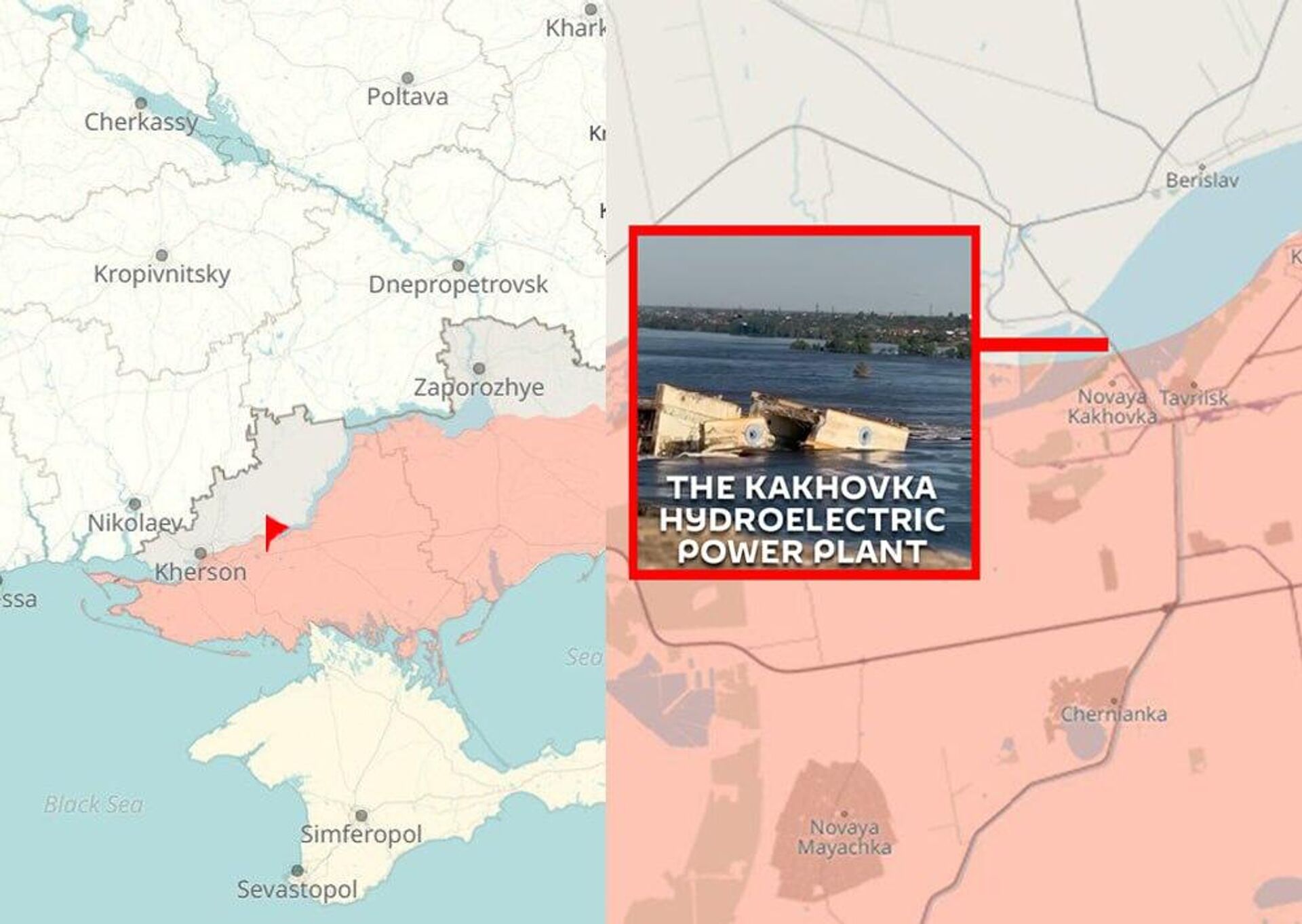
Map of Novaya Kakhovka following Ukrainian attack on the Kakhovka Hydro Power Plant
© Sputnik
When Was Kakhovka Hydroelectric Power Plant Built?
Construction of the Kakhovka HPP began in September 1950. After the last generator was commissioned in October 1956, the Kakhovka complex elevated the water level in the Dnepr River to 16 meters, forming the Kakhovka reservoir, boasting a volume of 18.19 km³.
The Kakhovka hydroelectric complex includes:
Power plant machine room
Gravity type weir dam 447 m long
Power plant building with mounting platform
Earthen dam between the lock and hydroelectric power station
Single chamber shipping lock
Floodplain and above-floodplain earthen dam
Why is Kakhovka Hydroelectric Power Plant Dam Important?
The Kakhovka dam, erected in 1956 as part of the Kakhovka HPP, stands 30 meters high. The length of the dam is almost 4 km, and its height is 16.5 meters. It is operated by 28 hydraulic locks measuring 12 by 9 meters. Water from the Kakhovka reservoir cools the 5.7 GW Zaporozhye Nuclear Power Plant. Furthermore, its waters feed the arid regions of the Kherson region and the Crimean Peninsula via the North Crimean Canal.
The dam, besides hydroelectric power generation and irrigation, has also facilitated navigation, with the deep water allowing shipping up and down river. The dam itself has a road and a railway crossing it.
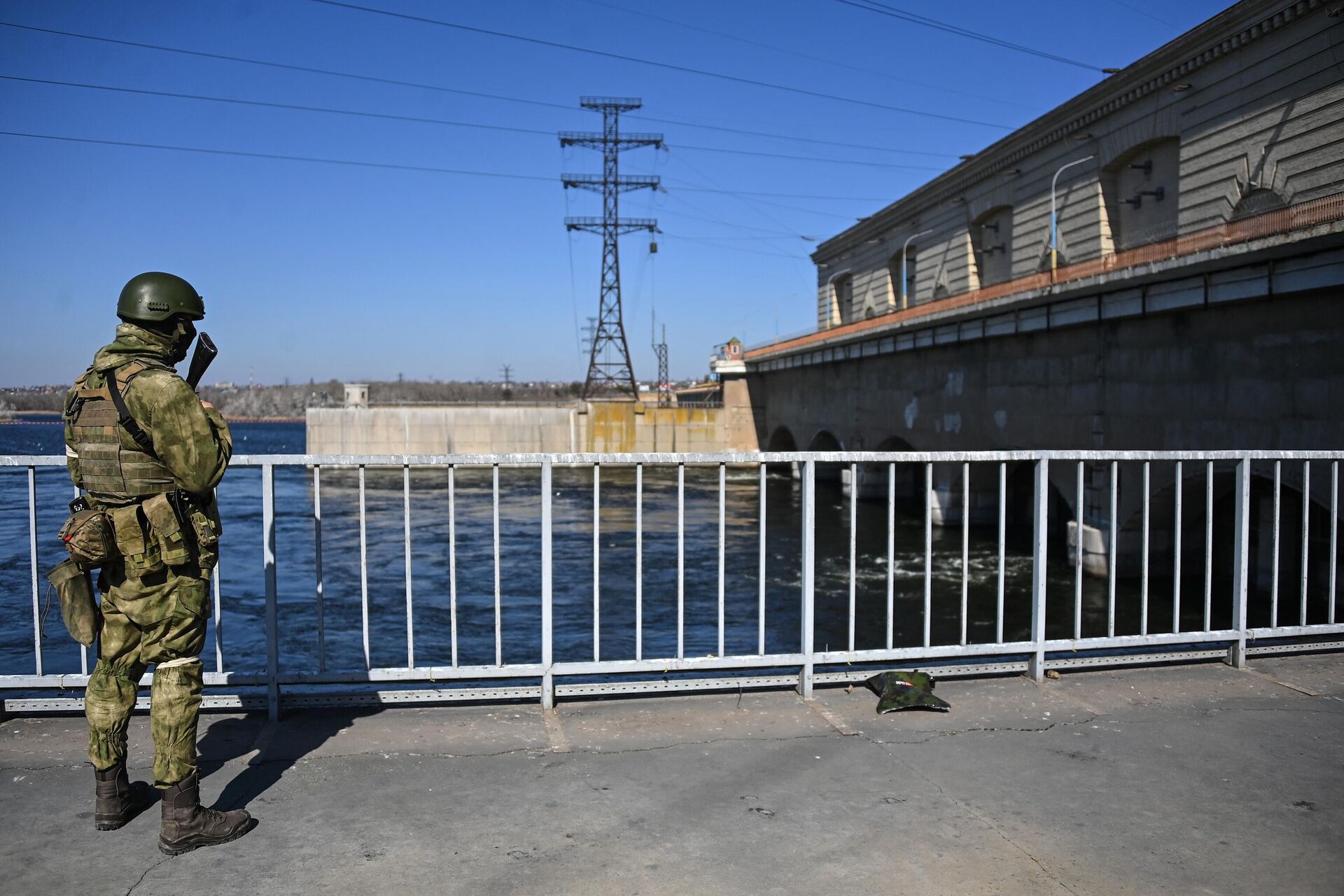
Russian serviceman guards the Hydro Power Plant in Novaya Kakhovka, Kherson Region.
© Sputnik
/ What Are Risks If Kakhovka Hydroelectric Power Plant is Damaged?
There are a number of risks linked with damage to the Kakhovka HPP and its dam from Ukraine's shelling.
Flooding
First, bursting the dam could send a huge amount of water down the river Dnepr, flooding settlements below it, threatening lives. As a result of the Kiev attack on June 6, 14 settlements and 22,000 residents are at risk of flooding, Novaya Kakhovka city Mayor Vladimir Leontyev underscored.
While it is difficult to destroy a dam such as Kakhovka, Russian experts claim, if this were to happen, a destructive wave might be generated, with a speed of 50 km/h, and reach the city of Kherson. According to media-cited experts, if water flows along the lower part of the Dnepr, the level would rise by 1-1.5 m, damaging infrastructure and fields. The destruction would affect both the left bank and the higher, right bank, of the waterway. Another consequence would be absence of a land crossing between the right and left banks of the Dnepr for 200 km around.
Water Supply & Irrigation
Second, the dam's irrigation function could be disrupted due to damage to the system of canals that feed southern Ukraine, as well as Russia's Crimea. After the Crimean Peninsula voted overwhelmingly to reunite with Russia in the 2014 referendum, Ukraine shut down the canal, resulting in water supply problems for the Russian region.
Moscow was able to restore the flow of water in March 2022 as part of its ongoing special military operation in Ukraine. Some studies indicate that the canal provided 85% of Crimea's water prior to the 2014 blockade by Ukraine. At present, thanks to the North Crimean Canal, up to two million cubic meters of water are supplied to the peninsula daily, mainly for agricultural work.
Now, with the damage sustained on Monday after Ukraine's attack, there is a risk that "the North Crimean Canal will become shallow," the region’s head, Sergey Aksyonov, said on Telegram.
Zaporozhye NPP
Third, but certainly not least important, there have been warnings that the shelling of the Kakhovka HPP could be fraught with catastrophe at the Zaporozhye Nuclear Power Plant (NPP). Both facilities are linked to the same energy grid of Ukraine, Arseny Zelensky, the HPP's deputy director for reconstruction, said in 2022.
“Of course, hostilities near the plant are unacceptable, it is a strategic object ... Problems with the dam at the Kakhovka HPP will lead to grave trouble at the Zaporozhye NPP, it could lead to a nuclear disaster," the HPP's deputy director said last year.
Located on the left bank of the Dnepr River, the Zaporozhye NPP is the largest nuclear power plant in Europe by number of units and energy output. It came under the control of Russian forces in early March 2022 and has since been repeatedly shelled, raising international concerns over a possible nuclear incident. On October 5, the Zaporozhye NPP was placed under the control of Russian institutions in line with instructions from President Vladimir Putin.
A plethora of Russian experts have told local media that the Zaporozhye NPP is located upstream, and all three circuits of the station's cooling system operate in isolation, which means that the water for cooling the power units at the station will not disappear after the current damage to the Kakhovka HPP dam.
What Has Been Happening to Kakhovka Hydroelectric Power Plant?
The Kakhovka HPP has been repeatedly shelled by Ukraine's forces since 2022, ever since the territory where it is situated came under the control of Russian forces in March last year. In August 2022, Ukrainian forces shelled the HPP with HIMARS rockets, but the attack was repelled with no critical damage caused.
"At the moment we have three hydroelectric units in operation; there were four of them before the strike near the northern side [of the facility]. We work in a very dangerous environment. Of course, hostilities near the plant are unacceptable, it is a strategic object..." the HPP's deputy director for reconstruction said at the time.
In October 2022, Russia's Permanent Representative to the United Nations Vassily Nebenzya presented the UN Security Council with a letter calling to prevent Ukrainian provocations at the Kakhovka HPP. Nebenzya underscored that under the patronage of its "Western curators," the Zelensky regime was consistently striking at the civilian infrastructure, with "up to 120 missiles arriving per day.” Russia's statement warned of the need to prevent a "monstrous provocation." The Russian envoy pointed out that most of the rockets hitting the territory of Novaya Kakhovka and the HPP were US-made HIMARS. Were the dam to be breached, Moscow warned, thousands of civilians could die.
In May, Novaya Kakhovka city Mayor Vladimir Leontyev said that Ukrainian troops attacking the Kakhovka HPP were preventing repairs from being carried out.
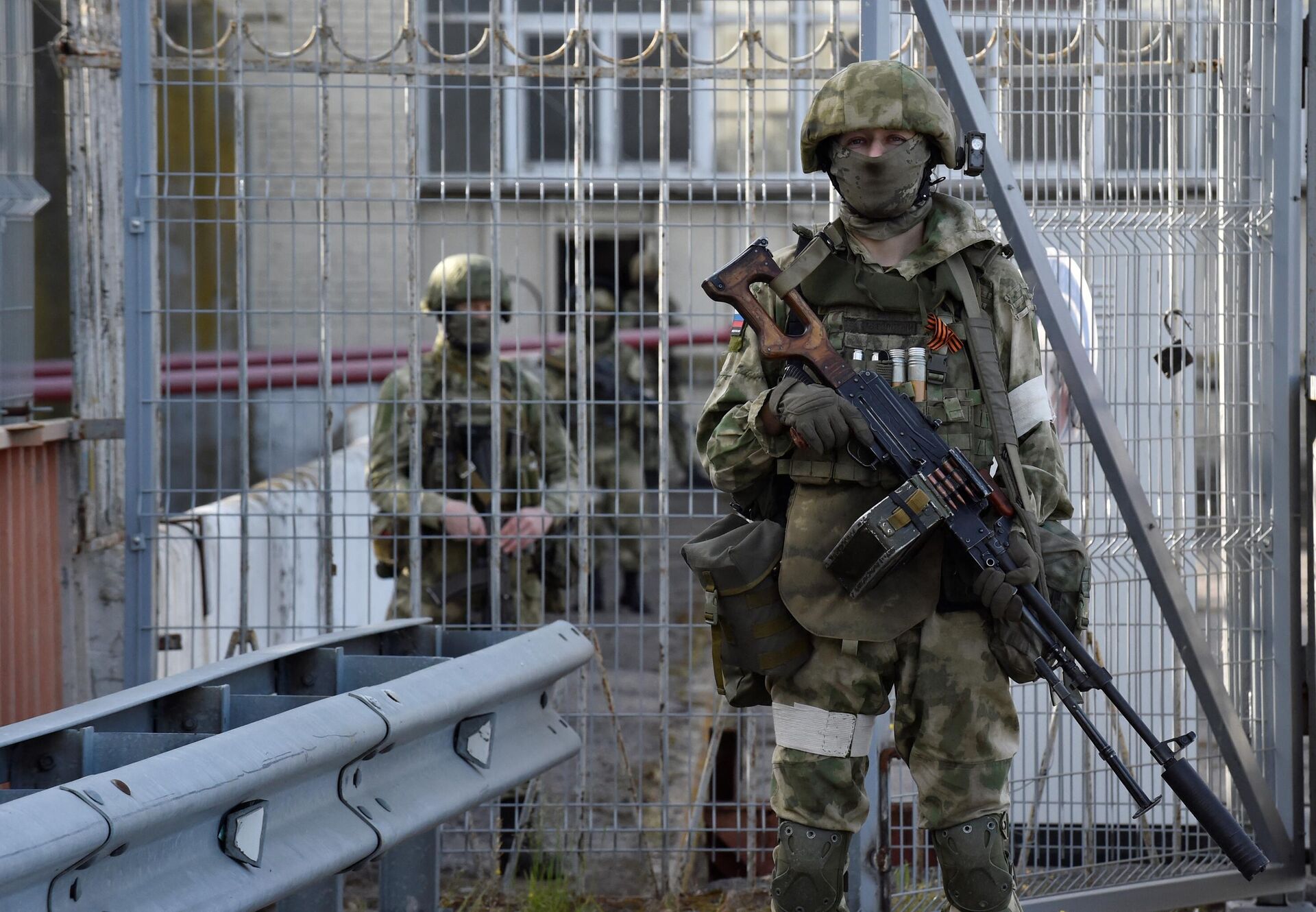
This photo taken on May 20, 2022, shows Russian servicemen patrolling at the Kakhovka Hydroelectric Power Plant, Kherson Oblast.
© AFP 2023 / OLGA MALTSEVA
West's Blame Game
Western mainstream media has been quick to jump on the bandwagon of the Ukrainian narrative, attempting to pin the blame for the destruction of parts of the Kakhovka plant on June 6 on Russian forces. Multiple senior Ukrainian officials and military figures have claimed that Russia “sabotaged the dam.”
Such swift, blatantly unsubstantiated redirection of blame is nothing new for the so-called collective West. Developments ranging from the 2014 "genocide" carried out by Kiev authorities in Donbass under the guiding hand of their Western puppet masters, to attacks on Crimea's infrastructure, and the Nord Stream sabotage are glaring proof of the tactics plied by them.
Incidentally, after the Nord Stream 1 and 2 gas pipelines across the Baltic Sea were blown up on September 26, and the ensuing long-winded "investigation" launched by Denmark, Germany, and Sweden led nowhere, veteran US investigative journalist Seymour Hersh later revealed direct US culpability in that act of sabotage and terrorism. However, the Western mainstream media nonetheless tinkled with speculation that Russia itself was responsible for the blasts. The Western press also latched upon another yarn it willingly disseminated to conceal the truth.
The current developments at the Kakhovka HPP feed into the patchwork of events that have been spawned by the NATO-Russia proxy war in Ukraine, replete with sabotage and terrorism.


